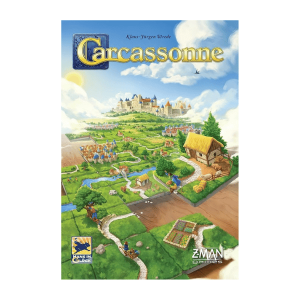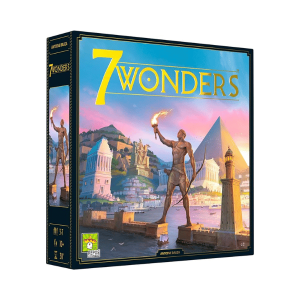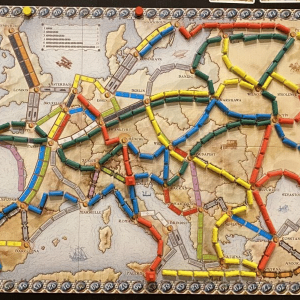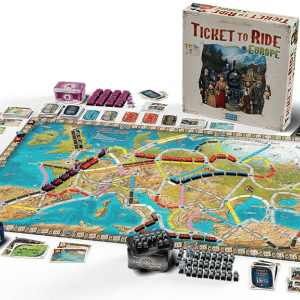Carcassonne Board Games
£34.99
Carcassonne is a tile-placement game where players build a medieval landscape by placing tiles depicting cities, roads, monasteries, and fields. Players then place their followers (meeples) on these features to score points. The game’s simplicity, combined with its strategic depth, makes it a favorite among board game lovers.
33 in stock
Introduction
Carcassonne Board Games have captivated players worldwide with their blend of strategy, simplicity, and elegance. Whether you’re a seasoned board game enthusiast or a casual player looking for a new challenge, Carcassonne offers a unique experience that is both engaging and intellectually stimulating.
Carcassonne Board Games, inspired by the medieval fortified town in southern France, have become a staple in the board gaming community. Designed by Klaus-Jürgen Wrede and first published in 2000, the game has since won several awards, including the prestigious Spiel des Jahres (Game of the Year) in 2001.
Gameplay Overview

Carcassonne is a tile-placement game where players draw and place tiles to construct a landscape featuring cities, roads, monasteries, and fields. Each player has a set of followers (also known as meeples) that can be placed on these tiles to claim various features and score points. The objective is to strategically place tiles and meeples to maximize your score while limiting your opponents’ scoring opportunities.
Components
- Tiles: The game includes 72 land tiles, each depicting various combinations of cities, roads, monasteries, and fields.
- Meeples: Each player receives eight followers, used to claim features on the tiles.
- Scoring Track: A score track helps players keep track of their points throughout the game.
Rules and Mechanics

- Tile Placement: Players take turns drawing a tile and placing it adjacent to tiles already on the table, ensuring the edges match (e.g., roads to roads, cities to cities).
- Meeple Placement: After placing a tile, the player can choose to place one of their meeples on a feature on that tile. Meeples can be placed on cities, roads, monasteries, or fields.
- Scoring: Points are scored based on the features claimed by meeples. Completed cities and roads score more points, while monasteries score points when completely surrounded by other tiles. Fields score points at the end of the game based on adjacent completed cities.
- Game End: The game ends when all tiles have been placed. Final scoring includes points for incomplete features and fields.
Expansions and Variations
Carcassonne has numerous expansions that add new tiles, rules, and mechanics, enhancing the gameplay experience. Some popular expansions include:
- Inns & Cathedrals: Adds new tiles and meeples, along with the inn and cathedral features that increase the scoring potential of roads and cities.
- Traders & Builders: Introduces trade goods and builders, offering new strategic options and scoring opportunities.
- The River: Adds a set of river tiles that create a unique starting layout and alter the game dynamics.
Why Carcassonne?

Carcassonne’s appeal lies in its balance of simplicity and depth. The game is easy to learn, making it accessible to new players, but it also offers enough strategic depth to keep experienced players engaged. The tile-placement mechanic ensures that no two games are ever the same, providing endless replayability.
Additionally, the game’s visual appeal, with its charming medieval artwork and high-quality components, makes it a joy to play. The expansions further enrich the experience, offering new challenges and strategies for those looking to deepen their Carcassonne experience.
Conclusion
Carcassonne Board Games offer a captivating blend of strategy, simplicity, and endless replayability. Whether you’re playing the base game or exploring the myriad of expansions, Carcassonne promises an engaging and intellectually stimulating experience for players of all ages. Its timeless design and appeal make it a must-have for any board game collection.
So, gather your friends and family, draw your tiles, place your meeples, and immerse yourself in the enchanting world of Carcassonne. Whether you’re building sprawling cities or claiming vast fields, every game promises a new adventure and countless moments of fun and strategy.
See more: here
Reed more: here
Be the first to review “Carcassonne Board Games” Cancel reply
Related products
Strategy Board Games
Strategy Board Games
Strategy Board Games
Strategy Board Games
Strategy Board Games
















Reviews
There are no reviews yet.